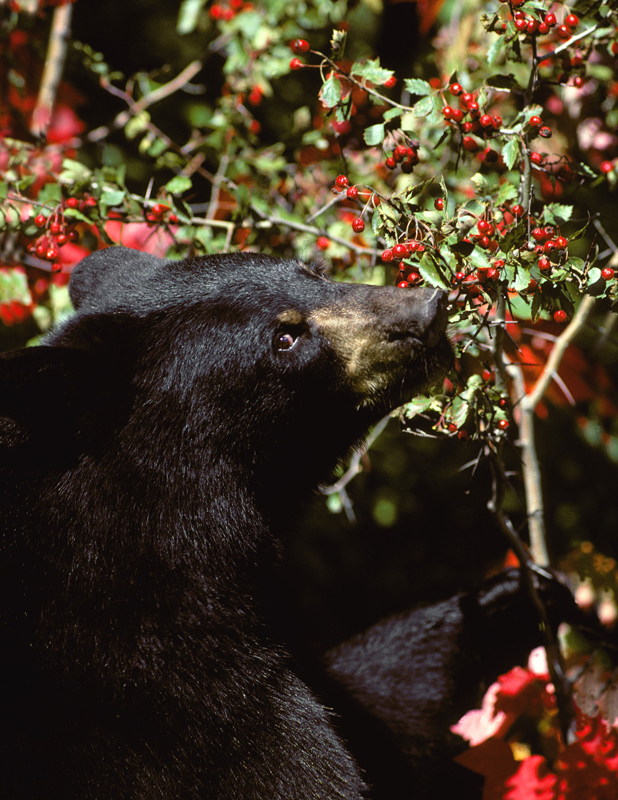Preparations for Birth
Getting fat is the most important preparation for birth.After mating in late May or June, pregnant females focus on eating for the rest of the summer. Females that don’t become fat enough by fall cannot maintain their pregnancies.
Around Ely, females that weigh 176 or more by fall maintain pregnancies, give birth in dens in mid to late January, and provide enough milk for their cubs to survive. Females that weigh less than 148 pounds in fall do not give birth. Females of intermediate weights may or may not give birth, and cubs from those females are less likely to survive.
Pregnant females make dens earlier than other bears (as early as July 19) and line them with extra bedding. Around Ely, pregnant females begin hibernation in mid September to mid-October. Black bears delay implantation. That means their fertilized eggs do not immediately implant in the uterine walls and begin development. They remain free-floating in the uterus for about 5 months until November. Then they implant and grow rapidly. When the cubs are born in January, they weigh nearly a pound each.
The age at which females begin to reproduce depends upon food. Well-nourished females maintain pregnancies when they are as young as 2½ years old, giving birth at three, but some females around Ely are unable to maintain pregnancies until they are 7½ years old. The average age when females in this area first maintain a pregnancy is 5½. Near the northern edge of the black bear range in Canada, some do not become large enough to maintain pregnancies until they are 10½, giving birth to their first litters at 11.
 |
 |
 |







